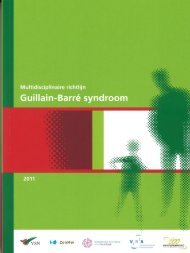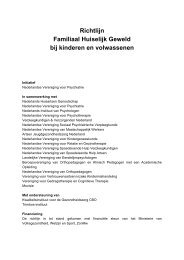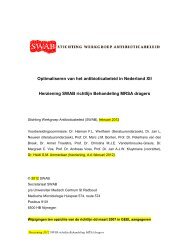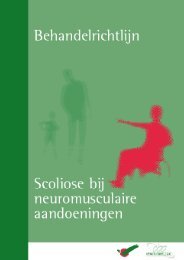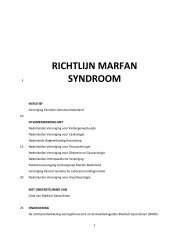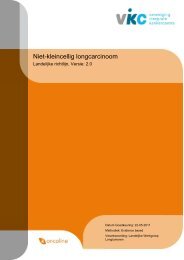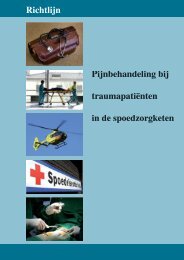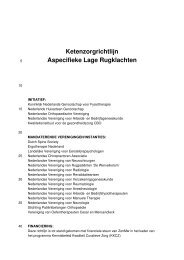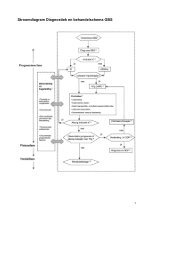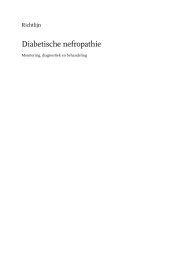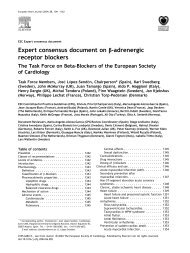Richtlijn: Otitis Externa - Kwaliteitskoepel
Richtlijn: Otitis Externa - Kwaliteitskoepel
Richtlijn: Otitis Externa - Kwaliteitskoepel
You also want an ePaper? Increase the reach of your titles
YUMPU automatically turns print PDFs into web optimized ePapers that Google loves.
Factoren van invloed op ziektebeloop en consequenties voor de<br />
behandeling<br />
Uitgangsvraag 1b<br />
Welke factoren kunnen het ziektebeloop en de behandeling van acute otitis externa beïnvloeden?<br />
Onderbouwing<br />
Key components of the clinical history that can modify management of diffuse AOE include:<br />
History of radiotherapy<br />
Radiotherapy can damage the external ear by causing acute and late skin reactions that involve the<br />
pinna, external canal, and periauricular region (Jereczek-Fossa 2004). Acute events include erythema,<br />
desquamation, or ulceration of the auricle and ear canal, thus leading to pain and otorrhea. Late skin<br />
changes include atrophy, necrosis or ulceration, external otitis, and external canal stenosis. Damage<br />
to the epithelium of sebaceous and apocrine glands can diminish cerumen secretion. Management of<br />
AOE in patients after radiotherapy may require systemic antimicrobials.<br />
Immunocompromised state<br />
In patients with a disease which may have an effect on their immune system, such as diabetes and<br />
HIV infection, infections of the ear may have a protracted course. Otomycosis or fungal infection of<br />
the external ear canal is seen more frequently in those patients. Aspergillus species (60% to 90%) and<br />
Candida species (10% to 40%) are often cultured (Kaur 2000). Symptoms include pruritus and<br />
thickened otorrhea, which may be black, gray, bluish green, yellow, or white. Candidal otitis externa<br />
results in white debris sprouting hyphae, best seen with an otologic microscope. Aspergillus niger<br />
appears as a moist white plug dotted with black debris (“wet newspaper”) (Ruckenstein 2005).<br />
Management may include debridement plus topical antifungal therapy, systemic antifungal therapy,<br />
or both.<br />
Open middle ear cavity and the presence of tympanostomy tubes<br />
Middle-ear disease can modify treatment of AOE. Patients with a tympanostomy tube or tympanic<br />
membrane perforation may develop diffuse AOE because of purulent middle-ear secretions that<br />
enter the ear canal. Clinicians should prescribe a non-ototoxic topical preparation when the tympanic<br />
membrane is not intact. Management of the underlying middle ear disease may also require systemic<br />
antimicrobials, imaging studies, or surgery.<br />
Conclusies<br />
Level of Evidence 3<br />
Jereczek-Fossa 2004, Kaur<br />
2000, Ruckenstein 2005<br />
Treatment can be influenced by radiotherapy, an<br />
immunocompromised state and an open middle ear cavity<br />
16 <strong>Richtlijn</strong> <strong>Otitis</strong> <strong>Externa</strong> 2010<br />
Nederlandse Vereniging voor Keel-Neus-Oorheelkunde en Heelkunde van het Hoofd-Halsgebied




